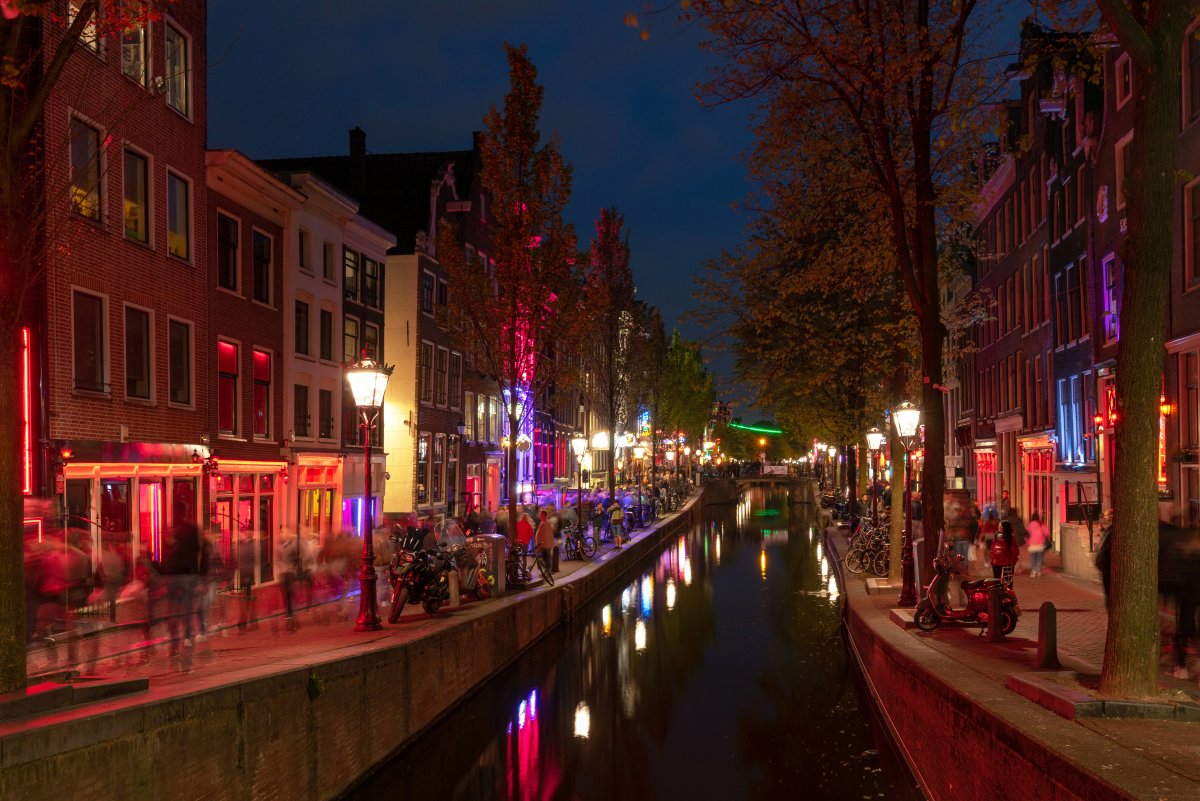In an attempt to crack down on tourists, smoking marijuana on the street of Amsterdam‘s Red Light District will soon be illegal.

The ban comes as part of a string of new legislation that aims to make life in the city more bearable for permanent residents who have long complained about the rowdiness of tourists in the area.
Amsterdam’s city council announced the cannabis ban on Thursday. The city’s statement said Amsterdam’s busiest neighbourhoods, including De Wallen (also known as the Red Light District), have become “unliveable.”
“Residents of the old town suffer a lot from mass tourism and alcohol and drug abuse on the streets,” wrote the Municipality of Amsterdam. “Especially at night, the atmosphere can get grim. People who are under the influence linger for a long time. Residents cannot sleep well and the neighbourhood becomes unsafe and unliveable.”
Smoking joints on the narrow, often tightly packed streets of Amsterdam’s inner city will be outlawed in mid-May. City officials wrote that if the nuisance persists, they may ban smoking on terraces of “coffeeshops.” (Coffeeshops sell cannabis, hash and other edible marijuana products that are decriminalized in The Netherlands.)

Get breaking National news
In addition to the soon-to-be smoking ban, the city is also discouraging the sale of alcohol. Stores in the inner city will be banned from selling alcohol after 4 p.m. Thursday to Sunday. Drinking in public will be forbidden.
In mid-May, bars, restaurants and cafes will close at 2 a.m., rather than the currently mandated 3 a.m. weekday and 4 a.m. weekend times.
Sex work establishments will also see their hours change as a result of the new legislation, and will now be required to close up shop at 3 a.m., rather than 6 a.m.
Amsterdam residents have the opportunity to debate the new legislation via an online forum.
Throughout recent years, the city has attempted to quell the impact of mass tourism on locals and their neighbourhoods. The “We Live Here” campaign, which aims to make tourists aware that the Red Light District is a residential area, even erected posters and billboards to remind tourists not to be overly rowdy in the streets.
https://www.instagram.com/p/BrzyysnHbw9/
Amsterdam, which has a population of about 921,400, is expected to see over 18 million tourists in 2023. When the overnight visitor population of the city reaches 18 million, the local government is required to intervene as part of the “Amsterdam Tourism in Balance.”
Some of the rules that are part of the Tourism in Balance policy include:
- a ban on new tourist shops
- a ban on holiday rentals in three neighbourhoods in the city centre
- a new restrictive policy to minimize the number of new hotels
- Boy kidnapped from California park in 1951 found more than 70 years later
- After false claims about Haitian immigrants, what’s happening in Springfield, Ohio?
- Trump was target of ‘assassination attempt,’ Florida suspect said in note: feds
- Israeli strikes on Lebanon kill at least 492 in deadliest day since 2006 war










Comments